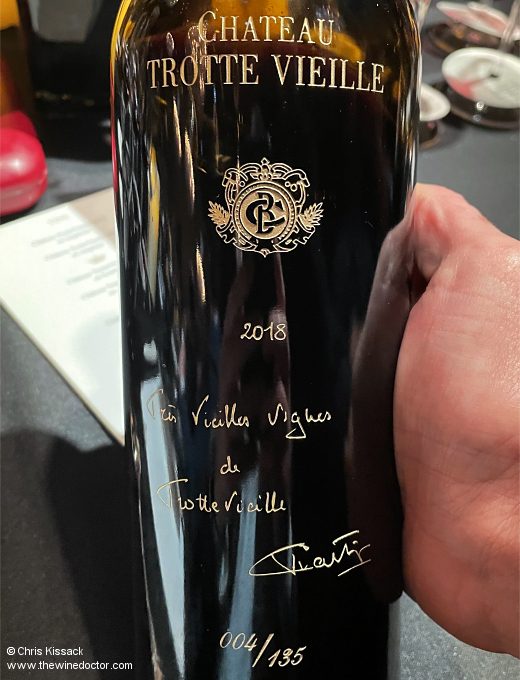Château Trotte Vieille: Tasting & Drinking
As I have already alluded during the course of this profile, I have tasted a few vintages of Château Trotte Vieille that straddle the turn of the century, and I would not disagree with the authors who have gone before me who noted that the wines of this estate were perhaps not all that they could be. A taste of a great vintage, the 1998 to be precise, was for me an early realisation that although the wine was good, it was perhaps not good enough when tasted against its peers; one must remember that the premier grand cru classé properties are the crème de la crème of all St Emilion. The 2003 showed somewhat better, however, and the 2004 was really pleasant, stylish and fresh. One obviously looks to the hyped-up 2005 to trump them all, but on tasting it at two years of age this didn’t seem to be the case.
Happily, the 2008, 2009 and 2010 vintages seemed better than I expected, and certainly a move in the right direction. And the vintages that followed sealed in place Château Trotte Vieille’s position.
Indeed, recent vintages have seen some remarkable wines crafted here, with very strong efforts in 2023, 2020 and 2019. Top wines were also produced in 2018, 2016 and 2015, although it is perhaps noteworthy that the more recent vintages were, to my palate, superior. Other worthwhile vintages that have punched above their weight include 2021 and 2017.
Of very old vintages, the 1959 was on one occasion brilliant, on another a touch feeble. When old bottles from this era are on form, they can be stunning, but some old vintages, such as 1949 and 1961, have on occasion disappointed.
As for Très Vieilles Vignes de Trotte Vieille, you can only taste this rarefied cuvée during visits to the château, so do not waste any time trying to hunt down a bottle. I tasted the 2018 (bottle number 4 of 135, pictured below) in early 2022, during the course of a dinner there, and at the time of writing that remains my sole encounter with a bottle. (5/12/07, updated 21/1/16, 20/9/24)

